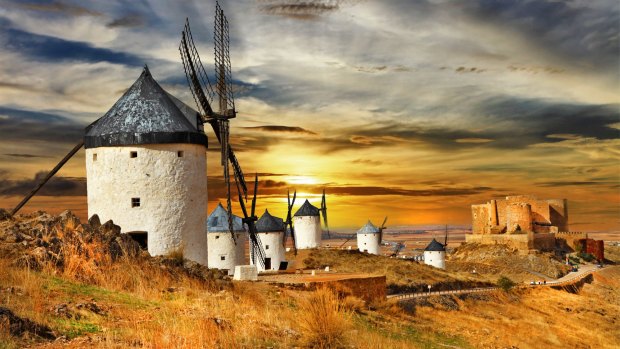
Toledo, Spanish city of gastronomy.
Chef Adolfo Munoz stands on the roof terrace of the restaurant he gave his name to almost 40 years ago. We look out over the old town of Toledo, which was capital of Spain until nearby Madrid took over that role in 1561. Locals compare the city to a layer cake, rising from ancient Roman foundations through narrow medieval streets to an upper tier of renaissance spires and bell-towers, dominated by Toledo Cathedral.
Munoz points to the hillside garden where he grows the herbs and legumes used in his dishes. And beyond, to a scrolling horizontal landscape of farms, vineyards and hunting grounds. That's Don Quixote territory out there: the province of Castilla-La Mancha and home of the self-styled knight errant from the defining Spanish novel by Miguel de Cervantes. The source, too, of Manchegan cuisine.
Dust-dry and baked-brown as it looks in places, that countryside apparently yields an abundance of fresh meat and fruit, wines and wild game, world-famous manchego cheese. All that premium-grade produce helped Toledo secure its current status as Spanish City of Gastronomy for 2016. (This year also marks the old town's 30th anniversary as a UNESCO World Heritage Site.)
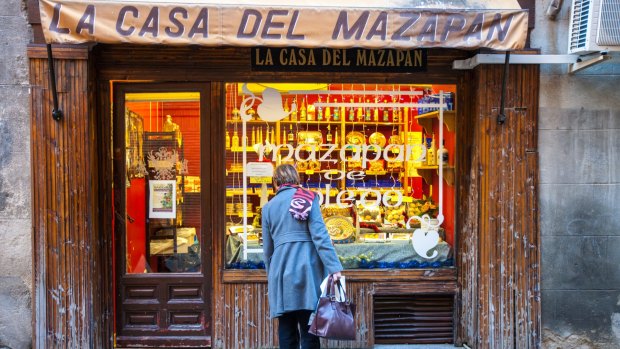
Marzipan is a local specialty of Toledo.Credit: iStock
"I go by smell first," says Munoz. "Your vegetables have to smell of earth, your fish has to smell of the sea, your game has to smell of the country, or there's no point in serving them." He goes on rhapsodise in quick, emphatic Spanish about the "perfection" of local tomatoes, lemons, almonds; the two-dozen-plus native foodstuffs and vintages officially stamped "Denominacion de Origen" (DO), as regional specialities of notable quality.
Lightning flashes over the plains, underlining the chef's point about the power-lines of historical energy that flow into his restaurant "like fibre-optic cables". The building itself is a 12th century townhouse built over an earlier structure up to 300 years older. Inside, amid the original marble columns and wooden beams, Munoz feeds me course after course: crispy skin of bacalao (dried, salted cod) with fried tomato, duck liver with currant jelly, white asparagus with truffle olive oil, heart of calabaza (squash) with a manchego cheese base, his famous pan-fried partridge with raspberry and rosemary.
After, his sommelier Miguel Angel takes me on a quick tour of Adolfo's wine cellar, said to be one of the greatest in Spain – an underground catacomb of bottles from across the country and the world, some covered in decades of dust, with price tags of up to €8000. Indiana Jones has been down here. Angel can't help but show me a picture on his iPhone of the actor Harrison Ford standing in this very cellar, less than two weeks ago.
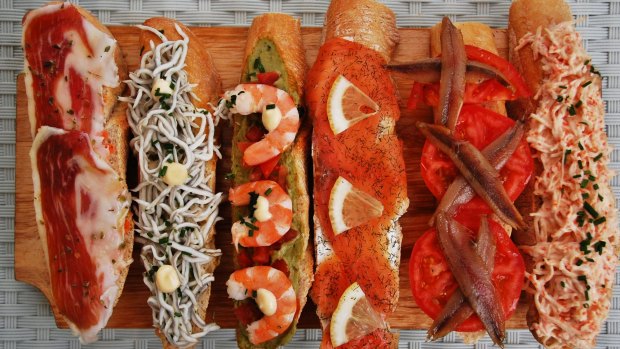
Restaurante Adolfo fare.Credit: Stephen Phelan
The next day, I wander the crooked, cobbled passages that link the Jewish Quarter, the Convent Quarter, the 1000-year-old Mosque of Cristo De La Luz, and various Christian churches that still wear their Moorish origins with a certain aesthetic pride, all well-preserved examples of mudejar art and architecture.
Some Manchegan delicacies, such as marzipan, have their roots in the Islamic culture that held sway over the city for centuries. Other rustic recipes such as carcamusas, a meat and tomato stew with peas and chickpeas, come from farmhouse tables well outside the old town walls. I demolish a bowl of the stuff for lunch at Cerveceria Trebol, one of few spots that might be called trendy. Another is the relatively new "gastronomic market", Mercado de San Agustin.
"The food in this city is amazing," says co-owner Mercedes Morales. "But I find some menus a bit old-fashioned, still focused on familiar stuff like carcamusas. We're trying to bring things up to date here."
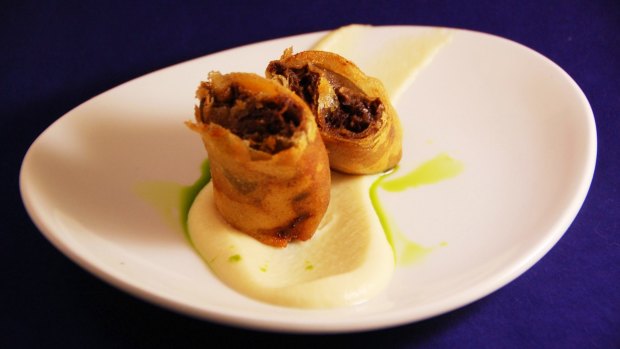
Restaurante Adolfo fare.Credit: Stephen Phelan
Installed in a centuries-old townhouse with a literally ancient basement, the market is now home to a coffee corner, a gourmet tapas, meat and pasta bar, a nikkei-style dining space for Japanese-Peruvian fusion cuisine, a cocktail lounge with an outdoor terrace that tends to draw the locals at the weekends.
Morales, the daughter of a local vintner and veterinarian, meets the sheep, goats and farmers who supply the market's cheese, and grows the tomatoes that go into the sauces and salads. Referring to the basement as "the cave", she's currently installing a new, "super-exclusive" restaurant around the protected ruins on that level, including a stone alcove that still bears hammer-marks from Visigoth craftsmen.
Modern-minded as she is, I'm surprised to hear that Morales believes in the ghost that supposedly haunts that cave. "We think it must be Roman, or Visigoth, or Moorish. And we're pretty sure it's a girl. She has locked me in the toilet twice." I'm less surprised that Morales has made this a selling point, advertising the ghost as an attraction on the market chalkboards. "Oh yeah, of course. This is Toledo. You've got to have a ghost."
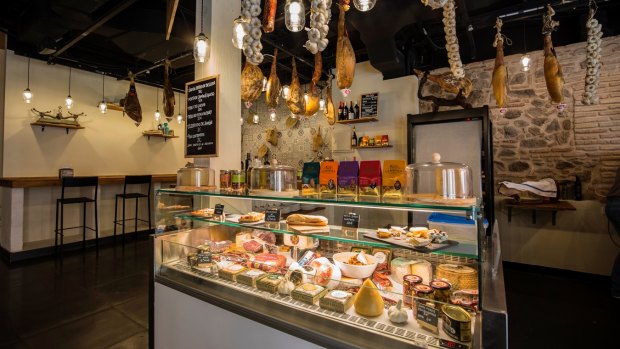
Toledo: Follow your nose. Credit: Stephen Phelan
For more information, see: grupoadolfo.com/restaurante/; cerveceriatrebol.com; mercadodesanagustin.com/en/
Sign up for the Traveller Deals newsletter
Get exclusive travel deals delivered straight to your inbox. Sign up now.